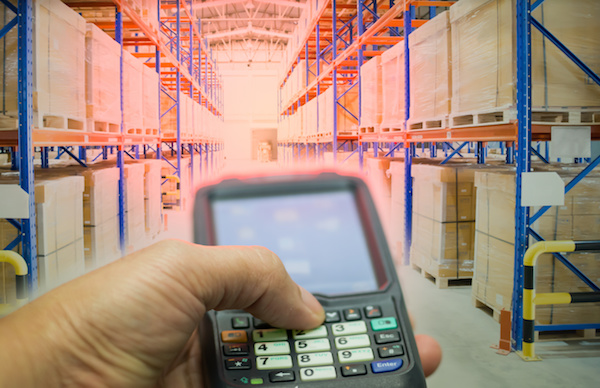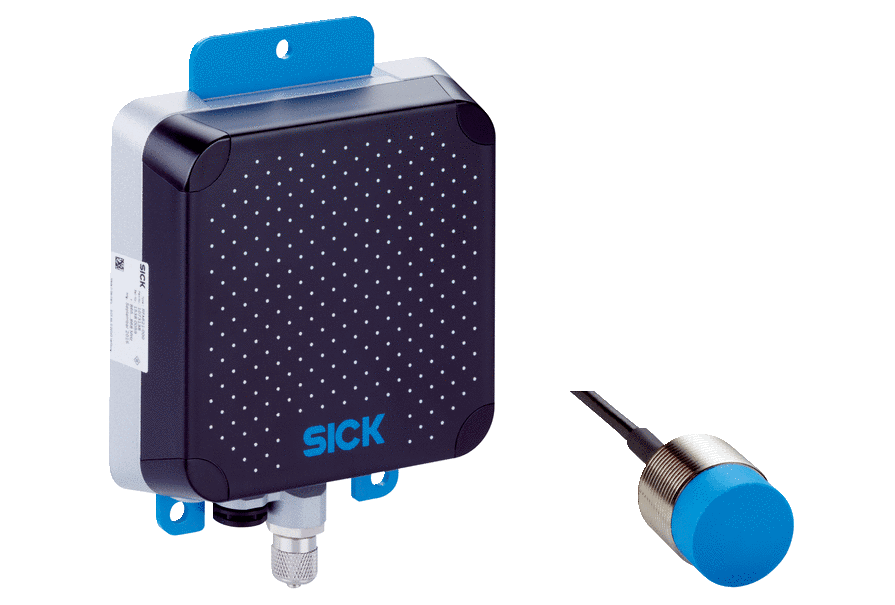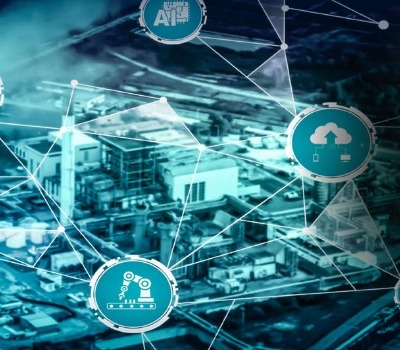
RFID technology
First of all, what is an RFID and what are they used for?

Radio frequency identification, RFID is a method for memorizing and retrieving data remotely using markers called "radio tags" ("tag")
These radio tags are small objects, such as self-adhesive labels, which can be glued or incorporated on objects or products or even implanted in living organisms (animals, human body). RFID tags include an antenna associated with an electronic chip that allows them to receive and respond to radio requests sent from the transceiver.
These electronic chips contain an identifier as well as additional data.
This technology can be used to identify:
- Objects or goods, as with a barcode (this is referred to as an electronic label);
- People, by being integrated into passports, transport cards, payment cards (contactless technology);
- Animals for which RFID identification is mandatory in many countries, by being implanted under the skin. This is also the case in a non-compulsory way for other working, companion or production animals (this is called a subcutaneous flea).
Radio Frequency Identification (RFID) provides manufacturers with quality systems for controlling automated operations. With this technology, you will be able to increase the efficiency and quality of your production.
The main purpose of RFID in industries is to allow the user to read and transmit authentication characteristics on a data carrier (tag). These data carriers (tags) accompany the part throughout the production chain. At each required step, the necessary data is then entered on the label and is then accessible as soon as it leaves production. When reading, you can see each step completed by the product on the tag, thanks to a quality management protocol.
In order to make a good choice for your RFDI, you need to consider several variations so as not to go wrong. First of all, it is good to know that there are 3 types of frequencies; low frequencies (BF-125 kHz), high frequencies (HF-13.56 MHz) and ultra-high frequencies (UHF MHz). On the other hand, as each industrial application is unique, it is important to collect several data and take into account many details to achieve the desired level of control (speed, range, environment, etc.)
You will find on the market a large number of products offered by several companies, this automated data collection technology is currently the most recent on the market. They include RFID products, cards, scanners, reading and writing systems, printers, tags and software designed to enable data transmission for real-time management of your equipment and inventory. Possible applications are; facilitate monitoring of inventory management, ensure equipment traceability, the identification process, rapid card payment systems.


Benefits
The advantages of RFID technology are numerous; it reduces data traceability errors and offers a high return on investment.
- RFID tags can be placed in the articles themselves and therefore are not subject to wear and tear like traditional barcodes affixed to the surface.
- RFID technology allows two-way data transfer. It is possible to write on the tags and add them later to keep track of goods and packages. It is also possible to read the tags to obtain the necessary data.
- Fast reading time compared to barcode scanners.
- Ability to read multiple tags simultaneously for improved efficiency.
Type of tag
There are several types of tags on the market; active, semi-passive and passive tags
Passive tags are the most economical and widely used RFID tags in supply chain applications. Devoid of batteries, these tags derive their energy from magnetic or electromagnetic waves emitted by the RFID reader. This reader sends electromagnetic waves to the tag's antenna, which will react and send a signal to the reader using the energy of these waves. Data retention and passive tag lifespan are estimated to be around 10 years. They are inexpensive to manufacture and generally reserved for volume productions. They can be used up to a distance of up to 200 meters.
Semi-passive tags are small and light, they are intermediate tags between active tags and passive tags. They use the reader's energy to generate a response to a request from the tag. They act as passive labels at the communication level. In contrast, other parts of the chip such as the microcontroller and memory get their power from a battery. This battery allows them, for example, to save data during transport. These tags are used when sending products under controlled temperature, recording it at regular intervals.
These tags are more robust and faster to read and transmit than passive tags, but they are also more expensive!
Active tags are tags equipped with a battery enabling them to emit a signal. This is why they can be read from very long distances, unlike passive markers. They are more expensive than passive tags and therefore are generally used to track valuable items because they have a larger memory capacity to store various types of information. They are mainly useful in telemetry or bill of lading applications to communicate a large amount of information over great distances. Their lifespan is approximately 5 years.

The different types of labels
There are several categories of RFID tags:
- “Read-only” labels. They include an identification number engraved by the founder as soon as the chip is manufactured. The number can be read but it is no longer editable.
- The labels "write once, read multiple". The user can register their unique identification number when using the tag for the first time. Then it is only possible to read this information.
- Labels in "read rewrite". They incorporate memory pages, in addition to the unique code, allowing new associated data to be written and modified.
Now, what are the questions you should ask yourself when planning to acquire an RFDI?
- What will be the application? Why do you need it ?
- What will your reading range be?
- LF (low frequency), HF (high frequency) or UHF (ultra high frequency)?
- How big will the objects be that need to be identified?
- What shape do the objects have to be identified?
- What type of materials are they made of? Metal, plastic, etc.
- For what type of surface?
- What is the number of objects that must be identified at the same time?
- What are the reading conditions?
- Is it on an assembly line, a conveyor?
- Do the objects have to be identified manually?
- Are there any temperature constraints?
- Are the objects in a humid or difficult environment?
- Are the products or objects made of a dangerous or chemical material?
- How do you want to integrate, track and route your data?
It sounds like a lot to be expected, but by taking the time to go through each step with one of our specialists, you will be able to properly establish your needs and acquire the product that is best suited to your applications.
Here is a summary table with the essential points to remember:

Need help ? You can communicate directly with our representatives, they will be able to advise you on the best RFID products adapted to your projects and your installations within your company. Contact them!
Contact details of team members
Blog posts




